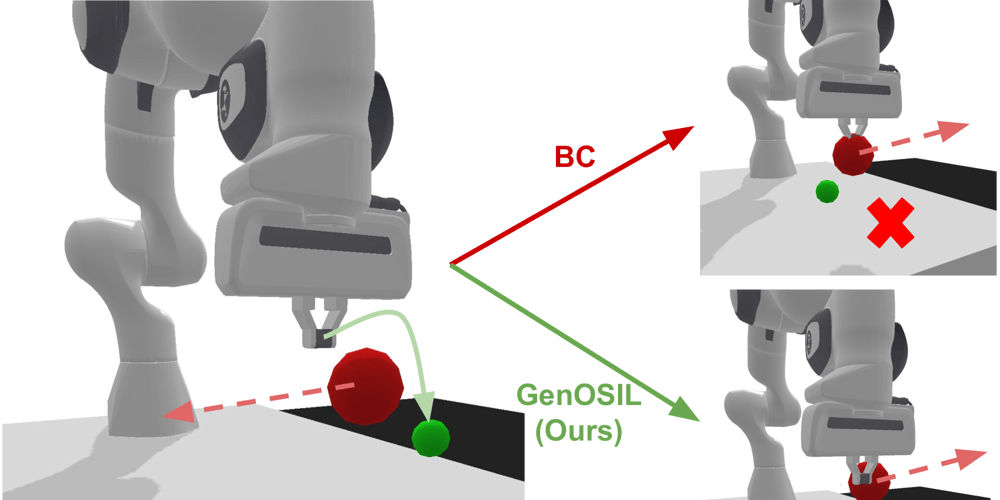Faraday Enclosures for Novices: What You Must Learn
In this modern world, the necessity for protecting our digital devices and data is more important than ever. One of the most effective means of safeguarding against electrical interference and undesired signals is through the use of electromagnetic shielding cages. These ingenious enclosures block electric fields and deliver a barrier against a variety of electromagnetic threats, such as those posed by electromagnetic pulses and RFI. Whether you are a longtime tech enthusiast or simply looking to secure your personal electronics, grasping how these cages work is essential. The following guide will include all you need to know about this technology, ranging from the key features to look for before making a buying decision to the multiple materials that can enhance their effectiveness. We will analyze the different sizes available, the differences between portable and non-portable units, and the significance of proper grounding. Additionally, we will provide insights on assessing your cage's performance, comparing the best options on the industry, and even touching on home-made solutions. By the end of this guide, you'll be ready to choose the appropriate Faraday cage for your particular needs and ensure your gadgets remain secure and safe. Understanding Electromagnetic Shields: Their Functionality A Faraday cage is an container made from metallic elements that shields against outside EM fields. When an external electric field meets the enclosure, the charges inside the enclosure redistribute themselves, neutralizing the force inside. This effect effectively safeguards anything contained inside the cage from various forms of electromagnetic disturbances, such as radio waves and electromagnetic pulses. The theory behind conductive shields is grounded in electrostatics, specifically the principles found by the scientist Michael Faraday in the 19th century. The conductive nature of the shield enables it to take in and reallocate electrical energy, creating a barrier that blocks transmissions from getting through. This makes certain that electronic equipment and delicate instruments within the shield stay safe by external signals, which can be damaging or dangerous. Faraday enclosures can vary in structure, scale, and the materials used, but their core operation stays consistent across various uses. Whether or not used in individual devices, military uses, or data security, the performance of a Faraday enclosure ultimately relies on its build and the substances employed. Understanding these principles enables users to pick the appropriate type of enclosure for their individual needs. Selecting the Appropriate Faraday Cage: Important Considerations As you decide on a Faraday cage, the material employed is essential. Diverse metals present varying levels of conductivity and shielding effectiveness. this post include aluminium, copper alloy, and iron, each offering unique benefits. Aluminium is lightweight and cost-effective, while copper provides better conductivity. Steel, although heavier, delivers sturdiness and resilience. Grasping the material's properties will help ensure that the cage effectively blocks electromagnetic interference and other unwanted signals. Size is another critical consideration while choosing a Faraday cage. It is important to consider the amount and category of equipment you wish to safeguard. If you're storing just a limited devices, a compact cage may suffice. However, for bulkier items, such as laptops or emergency supplies, a bigger cage may be necessary. Always make extra space for expansions, as your needs may grow over time. In conclusion, consider the application of your Faraday cage. Are you preparing for potential EMP threats, or do you want it for everyday use like safeguarding personal electronics? Determine whether you prefer a portable option for on-the-go protection or a fixed cage for a static setup. Comprehending the context of your use will assist you in picking the right Faraday cage customized to your particular needs, providing ideal protection. Testing Procedures and Care: Guaranteeing Efficient Protection To verify your shield is working correctly, it is crucial to perform regular evaluations on its shielding performance. A simple approach involves using a transmitter or a mobile phone inside the cage. If you fail to receive signals while the device is inside, this suggests effective protection. Alternatively, specialized devices can assess the amount of electromagnetic interference, providing more accurate results for those who seek thorough scrutiny. Performing these evaluations regularly can help detect any potential failures in the cage's protection over time. Maintenance is essential for maintaining the effectiveness of your Faraday cage. Maintaining it clean and uncluttered that could weaken its form is important. If your cage has any seams or joints, examine them regularly for signs of wear or damage. Any gaps can significantly reduce

In this modern world, the necessity for protecting our digital devices and data is more important than ever. One of the most effective means of safeguarding against electrical interference and undesired signals is through the use of electromagnetic shielding cages. These ingenious enclosures block electric fields and deliver a barrier against a variety of electromagnetic threats, such as those posed by electromagnetic pulses and RFI. Whether you are a longtime tech enthusiast or simply looking to secure your personal electronics, grasping how these cages work is essential.
The following guide will include all you need to know about this technology, ranging from the key features to look for before making a buying decision to the multiple materials that can enhance their effectiveness. We will analyze the different sizes available, the differences between portable and non-portable units, and the significance of proper grounding. Additionally, we will provide insights on assessing your cage's performance, comparing the best options on the industry, and even touching on home-made solutions. By the end of this guide, you'll be ready to choose the appropriate Faraday cage for your particular needs and ensure your gadgets remain secure and safe.
Understanding Electromagnetic Shields: Their Functionality
A Faraday cage is an container made from metallic elements that shields against outside EM fields. When an external electric field meets the enclosure, the charges inside the enclosure redistribute themselves, neutralizing the force inside. This effect effectively safeguards anything contained inside the cage from various forms of electromagnetic disturbances, such as radio waves and electromagnetic pulses.
The theory behind conductive shields is grounded in electrostatics, specifically the principles found by the scientist Michael Faraday in the 19th century. The conductive nature of the shield enables it to take in and reallocate electrical energy, creating a barrier that blocks transmissions from getting through. This makes certain that electronic equipment and delicate instruments within the shield stay safe by external signals, which can be damaging or dangerous.
Faraday enclosures can vary in structure, scale, and the materials used, but their core operation stays consistent across various uses. Whether or not used in individual devices, military uses, or data security, the performance of a Faraday enclosure ultimately relies on its build and the substances employed. Understanding these principles enables users to pick the appropriate type of enclosure for their individual needs.
Selecting the Appropriate Faraday Cage: Important Considerations
As you decide on a Faraday cage, the material employed is essential. Diverse metals present varying levels of conductivity and shielding effectiveness. this post include aluminium, copper alloy, and iron, each offering unique benefits. Aluminium is lightweight and cost-effective, while copper provides better conductivity. Steel, although heavier, delivers sturdiness and resilience. Grasping the material's properties will help ensure that the cage effectively blocks electromagnetic interference and other unwanted signals.
Size is another critical consideration while choosing a Faraday cage. It is important to consider the amount and category of equipment you wish to safeguard. If you're storing just a limited devices, a compact cage may suffice. However, for bulkier items, such as laptops or emergency supplies, a bigger cage may be necessary. Always make extra space for expansions, as your needs may grow over time.
In conclusion, consider the application of your Faraday cage. Are you preparing for potential EMP threats, or do you want it for everyday use like safeguarding personal electronics? Determine whether you prefer a portable option for on-the-go protection or a fixed cage for a static setup. Comprehending the context of your use will assist you in picking the right Faraday cage customized to your particular needs, providing ideal protection.
Testing Procedures and Care: Guaranteeing Efficient Protection
To verify your shield is working correctly, it is crucial to perform regular evaluations on its shielding performance. A simple approach involves using a transmitter or a mobile phone inside the cage. If you fail to receive signals while the device is inside, this suggests effective protection. Alternatively, specialized devices can assess the amount of electromagnetic interference, providing more accurate results for those who seek thorough scrutiny. Performing these evaluations regularly can help detect any potential failures in the cage's protection over time.
Maintenance is essential for maintaining the effectiveness of your Faraday cage. Maintaining it clean and uncluttered that could weaken its form is important. If your cage has any seams or joints, examine them regularly for signs of wear or damage. Any gaps can significantly reduce the shielding effectiveness, allowing outside signals to enter. Additionally, make sure that the cage is properly grounded if it is intended to be so, as grounding can enhance its capability and safety.
A lot of people neglect the keeping and care of the devices inside the cage. Properly storing devices, ensuring they are not in contact with conductors, and maintaining a uniform climate can prevent damage and guarantee that they continue to be safeguarded. Consider use special bags for sensitive items and avoid overcrowding the cage, which could lead to damage. By adopting these maintenance tips, you can make sure that your shield remains to provide maximum possible protection for your important devices.












































































































































































![[The AI Show Episode 142]: ChatGPT’s New Image Generator, Studio Ghibli Craze and Backlash, Gemini 2.5, OpenAI Academy, 4o Updates, Vibe Marketing & xAI Acquires X](https://www.marketingaiinstitute.com/hubfs/ep%20142%20cover.png)



























































































































![[FREE EBOOKS] The Kubernetes Bible, The Ultimate Linux Shell Scripting Guide & Four More Best Selling Titles](https://www.javacodegeeks.com/wp-content/uploads/2012/12/jcg-logo.jpg)



![From drop-out to software architect with Jason Lengstorf [Podcast #167]](https://cdn.hashnode.com/res/hashnode/image/upload/v1743796461357/f3d19cd7-e6f5-4d7c-8bfc-eb974bc8da68.png?#)





































































































.png?#)





.jpg?#)
































_Christophe_Coat_Alamy.jpg?#)







































































































![Rapidus in Talks With Apple as It Accelerates Toward 2nm Chip Production [Report]](https://www.iclarified.com/images/news/96937/96937/96937-640.jpg)








































































































































